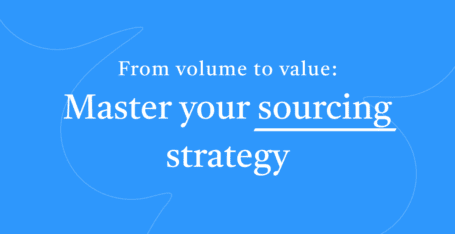Mergers and acquisitions are an exciting marker of two hospitals joining to expand market share, but they can also be a cause of uncertainty and stress for the employees involved. The success of this transition doesn’t solely rely on finding a strategic fit: it’s also about achieving cultural alignment in the hospitals coming together. This is where HR plays a critical role in driving the success of this change from within.
Merging two companies with two different internal structures, cultures and bylaws is inevitably going to be complicated. When you throw in hundreds of hospital staff, extensive administrative procedures, and situations where lives are on the line, the stakes are raised even higher.
So how can HR processes ensure the success of hospital mergers and acquisitions in the busy world of healthcare? Let’s take a look at some critical factors.
Stay focused on your goal
Hospital mergers and acquisitions have various goals, often including:
- strategic expansion
- entering a new market
- adding facilities and equipment
These transactions are about growth and opportunity. That’s why it’s so important to have strategic objectives and core principles driving the process. This will ensure the hospital can move forward without getting stagnated in administrative minutiae. HR plays an important role here by establishing a common goal and sense of collaboration within both management teams and staff.
To avoid ‘deal fatigue’ and internal inactivity, cumbersome processes should not be allowed to overtake the ultimate objectives of the M&A transition.
“HR plays an important role by establishing a common goal and sense of collaboration within both management teams and staff.”
HR can help by setting out people-focused objectives: this often means preserving the independence and management of the existing workforce, and championing the needs of employees when it comes to transition of positions and titles, duties, salaries and benefits.
HR drives communication
With any change in life, reluctance and uncertainty is inevitable. When that change affects employment, responsibilities and workplace culture, it can be all the more intimidating. That’s why managing the concerns of hospital employees proactively with a well-implemented, focused HR plan is so important. Throughout any change, communication is key.
“Throughout any change, communication is key.”
HR can be a facilitator of conversations between management and staff during this time, assuming the role of intermediary for any questions and concerns from both parties. When the HR team ensures engagement between employees and leadership during the transition process, the process can be seen as collaborative rather than threatening.
Culture is crucial to success
Ensuring alignment in not just the objectives but also the cultural values of the merging hospitals will mean that new processes are respected by staff who are kept informed and involved in the transition.
By first identifying the existing cultural values of both organisationsorganizations, and then developing a new set of values that builds on and adopts from this past, HR can ensure that the two hospitals come together as a cohesive whole.
Encouraging cultural integration was vital to ensure the success of the Lady Cilento Children’s Hospital after its launch. Built to replace Brisbane’s Royal Children’s and Mater Children’s Hospitals, one of the greatest challenges it faced was merging two sets of employees with different values and ways of operating. Through monthly staff forums and an ‘open door’ management policy, the new hospital was able to resolve teething issues and take on board employee feedback as it arose. By proactively encouraging open communication and facilitating employees working together to forge a new set of values the hospital established a shared culture unique.
“Ensuring alignment in not just objectives but also in cultural values is crucial to success.”
It’s important that HR takes time to check in with employees during this time of change. Through employee engagement and satisfaction surveys, people can have their voices heard. Communication facilitates the vital buy-in needed for staff to create and adopt a new culture together.
Similarly, using these open HR communication channels to uncover any voices resistant to change is a key way for hospitals to manage potential issues before they get out of hand.
HR due diligence avoids potential obstacles
The most common obstacles faced in the M&A process are also ones that can be avoided through HR due diligence.
Issues like:
- cultural differences
- poor integration and
- operational failings
can even be avoided before due diligence by conducting an internal evaluation of any concerns or questionable practices within hospitals.
This allows time to resolve or explain any issues before going into the due diligence process. By anticipating what the other party will want to know, rather than waiting for problems to be raised by them, HR can be proactive in ensuring a good organisationalorganizational fit for a potential merger or acquisition.
“The most common obstacles faced in the M&A process are also ones that can be avoided through HR due diligence.”
HR drives effective integration
When facilitating the integration of two hospitals, HR plays a crucial role in ensuring employee handover happens with minimal disruption. By creating employee handbooks that cover important information, facts and questions about the transition, HR can ensure employees start off on the right foot from day one.
In mergers and acquisitions where existing HR practices conflict with the parent company’s new set of rules, these processes are reconciled by a proactive approach to integration. It’s up to HR to collect and thoroughly understand important documents like bylaws, employee handbooks and employment agreements to identify potential conflict and establish new ground rules.
“HR can ensure employees start off on the right foot from day one.”
HR also assumes the key responsibility of ensuring personnel policies are coherent and up-to-date in this time of transition. By making sure all employees are aware of new policies covering core issues like drug and alcohol testing, anti-discrimination, discipline and record retention, HR ensures all staff are on the same page moving forward.
When it comes to unpaid sick and vacation pay, employee benefits and welfare arrangements, HR also plays a vital role in managing these changes and ensuring their hospital is not exposed to potential liabilities down the track.
Things to remember
While it’s easy to get caught up in the excitement and business potential of a merger or acquisition, it’s important to remember the important role HR plays in managing the fundamental pillars of this transition. At the core of every hospital are the people that run it on a daily basis. Making sure the factors that affect them, from their employment structure to the internal culture they form part of, are understood and accepted is crucial for a successful integration of hospitals.
Fresh insights for HR
Stay up to date with HR trends, tips and more when you sign up for our industry newsletter






